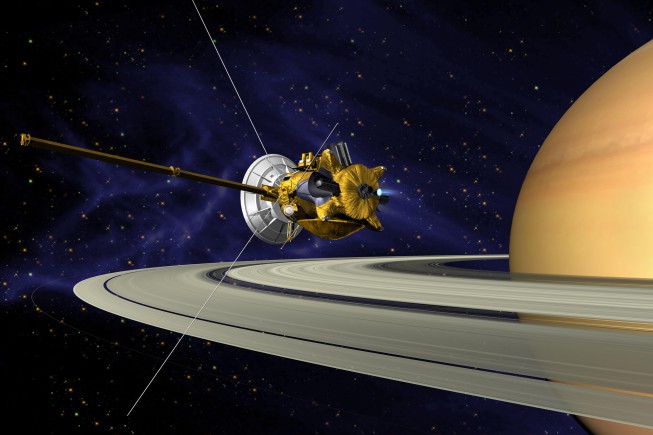At some point today (Wednesday, Oct. 28, 2015), NASA’s Cassini spacecraft will take the deepest dive ever through the ejecta plumes of Saturn’s moon Enceladus. And this is particularly exciting for me, since while I find space exploration fascinating generally, I keep special tabs on my old friend Cassini.
Scientists hope this close flyby–approaching to within 30 miles of Enceladus’ surface at a blistering 19,000 mph (yeah–you read that right) will shed light on what’s happening beneath the moon’s icy surface. The belief is that Enceladus has a global ocean beneath its icy crust, and learning more about the contents of the plumes venting from that ocean will tell us a great deal about the possibilities of life hidden beneath the ice.
While Cassini wasn’t designed to look for life–its a planetary survey craft, after all–it does have a suite of instruments that can be re-purposed. Passing through the plumes (which eject into space through great fissures in the ice that NASA scientists refer to as ‘tiger stripes’) it will be able to sense what that frozen water contains. Research already indicates that Enceladus has salts, organic molecules like methane, CO2, and ammonia. If it can find molecular hydrogen–a tell-tale sign of hyrdrothermal activity beneath the ocean–then Enceladus will have all the requirements for the development of life as we know and understand it.
Good luck, Cassini! I’ll be watching…
– S.
